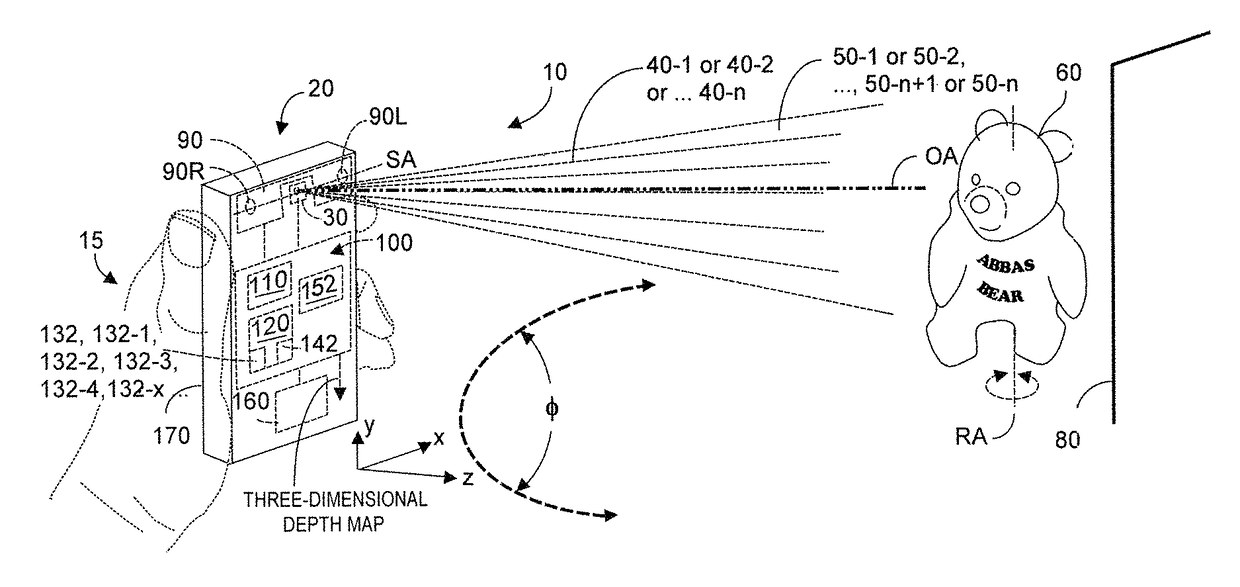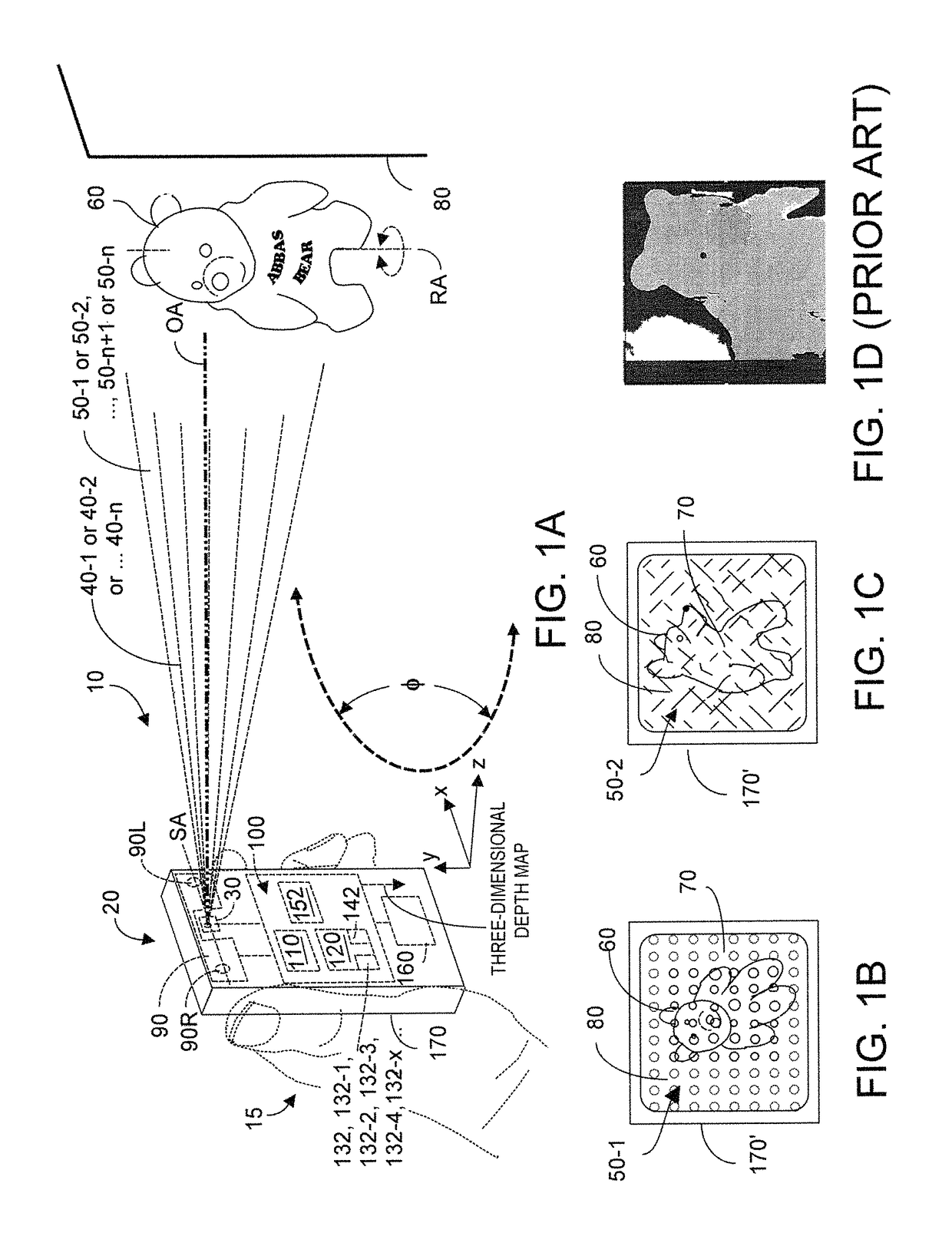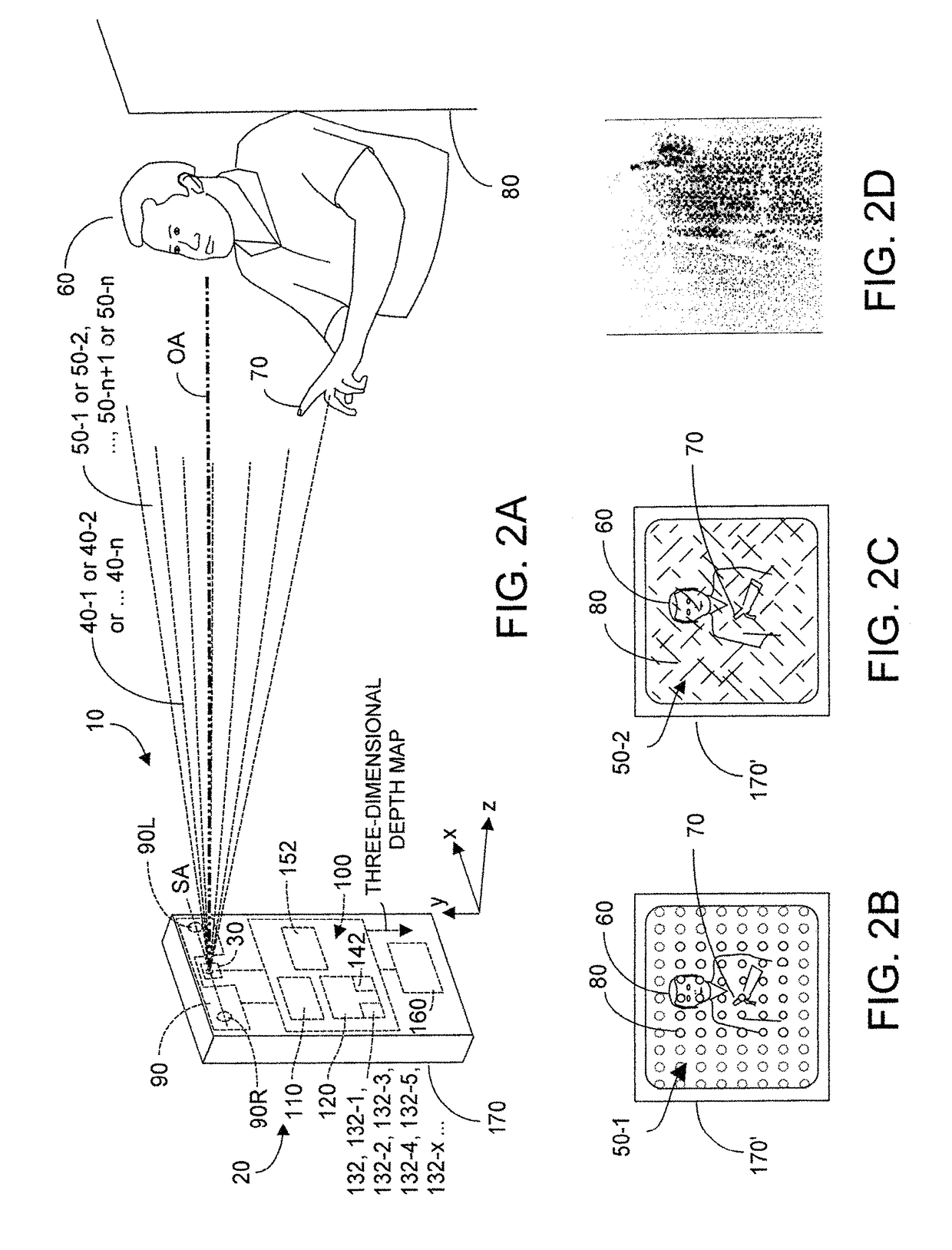Systems and methods for compact space-time stereo three-dimensional depth sensing
- Summary
- Abstract
- Description
- Claims
- Application Information
AI Technical Summary
Benefits of technology
Problems solved by technology
Method used
Image
Examples
Embodiment Construction
[0040]It is known in the art that a collimated light source is desirable in two-dimensional imaging systems whose pattern generator system projects at least one pattern onto a scene, at least at portion of which is imaged by an optical acquisition system. The presence of appropriately created and projected patterns in the imaged scene helps the processor system in the two-dimensional imaging system rapidly acquire useful three-dimensional (x,y,z) depth map data from the two dimensional (x,y) data acquired by the optical acquisition system. However, embodiments of the present invention recognize that projected light patterns of collimated light do not fall upon the imaged scene including target object(s) of interest therein, as perfectly formed dots of light. In practice, rather than perfect dots what is projected are light rays that have a nearly Gaussian distribution profile of intensity and phase across the imaged scene and target object(s) within. Within the scene as imaged by th...
PUM
 Login to View More
Login to View More Abstract
Description
Claims
Application Information
 Login to View More
Login to View More - R&D
- Intellectual Property
- Life Sciences
- Materials
- Tech Scout
- Unparalleled Data Quality
- Higher Quality Content
- 60% Fewer Hallucinations
Browse by: Latest US Patents, China's latest patents, Technical Efficacy Thesaurus, Application Domain, Technology Topic, Popular Technical Reports.
© 2025 PatSnap. All rights reserved.Legal|Privacy policy|Modern Slavery Act Transparency Statement|Sitemap|About US| Contact US: help@patsnap.com



